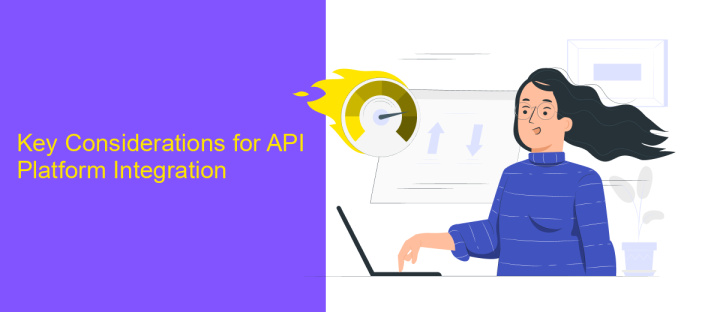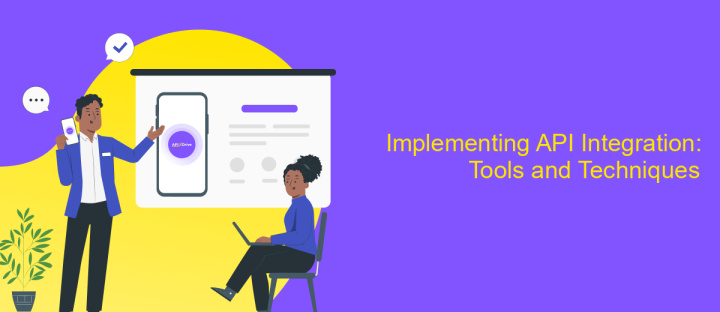Integration API Platform
In today's digital landscape, the seamless integration of various software applications is crucial for enhancing operational efficiency and driving innovation. An Integration API Platform serves as a powerful tool that enables businesses to connect disparate systems, automate workflows, and facilitate data exchange. By leveraging such platforms, organizations can streamline processes, reduce manual efforts, and unlock new opportunities for growth and collaboration in an increasingly interconnected world.
Introduction to API Platforms and Integration
In today's digital landscape, API platforms play a crucial role in enabling seamless integration between diverse software systems. These platforms provide a standardized way for applications to communicate and share data, enhancing interoperability and functionality. By leveraging APIs, businesses can streamline processes, improve efficiency, and foster innovation across their operations.
- Facilitates communication between different software systems
- Enhances data sharing and interoperability
- Supports scalability and flexibility in application development
- Enables faster time-to-market for new features and services
- Promotes innovation by allowing third-party integrations
API platforms serve as the backbone for modern digital ecosystems, connecting various applications, services, and devices. They not only simplify the integration process but also provide robust security measures to protect sensitive data. As businesses continue to adopt digital transformation strategies, the importance of effective API management and integration will only grow, making API platforms indispensable tools for achieving a competitive edge in the market.
Key Considerations for API Platform Integration

When integrating an API platform, it's crucial to evaluate compatibility with existing systems. This involves assessing the API's protocols and data formats to ensure seamless communication with your current infrastructure. Additionally, consider the scalability of the API platform. As your business grows, the platform should be able to handle increased load and offer flexibility for future expansions. Understanding the security measures in place, such as encryption and authentication protocols, is also essential to protect sensitive data during transmission.
Another key consideration is the ease of integration. Platforms like ApiX-Drive simplify the integration process by offering user-friendly tools and automation features. This not only reduces the time and effort required but also minimizes the potential for errors. It's also important to evaluate the platform's support and documentation. Comprehensive resources and responsive customer service can significantly aid in troubleshooting and optimizing the integration process. Lastly, consider the cost implications, ensuring that the platform provides a balance between functionality and affordability to meet your business needs.
Common API Integration Patterns and Architectures

API integration is a critical component in modern software development, enabling disparate systems to communicate and share data seamlessly. Common integration patterns include point-to-point, where APIs directly connect two systems, and hub-and-spoke, which uses a central hub to manage communication between multiple endpoints. These patterns help streamline processes and improve data consistency across platforms.
- Point-to-Point Integration: Direct connection between two APIs, ideal for simple use cases but can become complex with numerous connections.
- Hub-and-Spoke Integration: Centralized hub manages interactions, reducing complexity and improving scalability.
- Event-Driven Architecture: Systems communicate through events, enhancing real-time data processing and system responsiveness.
- Microservices Architecture: APIs facilitate communication between microservices, promoting flexibility and independent scaling.
Choosing the right API integration pattern depends on the specific requirements and scale of your project. Consider factors such as the number of systems involved, the need for real-time data processing, and future scalability. By selecting an appropriate architecture, organizations can ensure efficient data flow and maintain robust system performance.
Implementing API Integration: Tools and Techniques

Implementing API integration requires a strategic approach to ensure seamless connectivity between systems. It starts with understanding the specific needs of your business and identifying the right APIs that align with these requirements. Careful planning and analysis are crucial to avoid potential pitfalls and ensure a smooth integration process.
Once the requirements are clear, selecting the appropriate tools and techniques becomes essential. There are various tools available that cater to different aspects of API integration, from development to testing and monitoring. Choosing the right set of tools can significantly streamline the process and enhance the performance of the integrated system.
- API Gateways: Manage and secure traffic between APIs and clients.
- API Management Platforms: Provide comprehensive solutions for monitoring, analytics, and lifecycle management.
- Integration Platforms as a Service (iPaaS): Facilitate seamless integration across cloud and on-premise applications.
- Testing Tools: Ensure API functionality and performance through automated testing.
By leveraging these tools and techniques, businesses can achieve effective API integration that enhances operational efficiency and drives innovation. Continuous monitoring and optimization are also essential to maintain the integration's effectiveness and adapt to evolving business needs.


Best Practices and Future Trends in API Integration
In the realm of API integration, adhering to best practices is vital for seamless connectivity and efficient data exchange. Prioritizing security is crucial; implementing OAuth 2.0 and using HTTPS can safeguard data transmissions. Ensuring scalability and flexibility is also essential, as it allows systems to accommodate growth and adapt to changing business needs. Additionally, maintaining comprehensive documentation and version control facilitates smoother integration processes and reduces the likelihood of errors. Leveraging platforms like ApiX-Drive can further streamline these processes by offering user-friendly interfaces and automated workflows, making integration accessible even to those with limited technical expertise.
Looking ahead, the future of API integration is poised to embrace several emerging trends. The rise of AI and machine learning is expected to enhance API capabilities, enabling smarter data processing and predictive analytics. Moreover, the shift towards microservices architecture is likely to continue, promoting modular and agile development. The increasing adoption of low-code and no-code platforms will democratize integration, empowering a broader range of users to create and manage APIs. As these trends unfold, staying informed and adaptable will be key to harnessing the full potential of API integration.
FAQ
What is an Integration API Platform?
How does an Integration API Platform work?
What are the benefits of using an Integration API Platform?
Can non-technical users set up integrations using an Integration API Platform?
What types of applications can be integrated using an Integration API Platform?
Do you want to achieve your goals in business, career and life faster and better? Do it with ApiX-Drive – a tool that will remove a significant part of the routine from workflows and free up additional time to achieve your goals. Test the capabilities of Apix-Drive for free – see for yourself the effectiveness of the tool.

